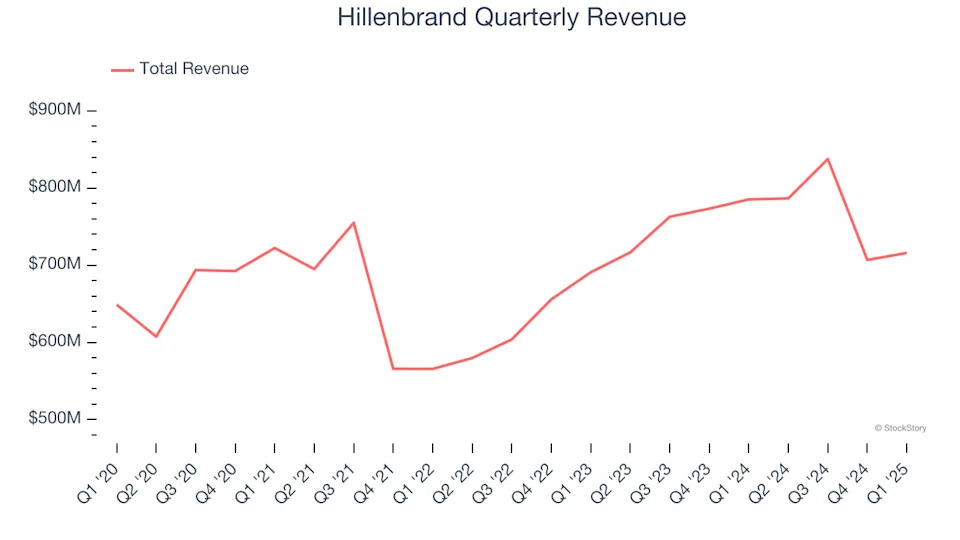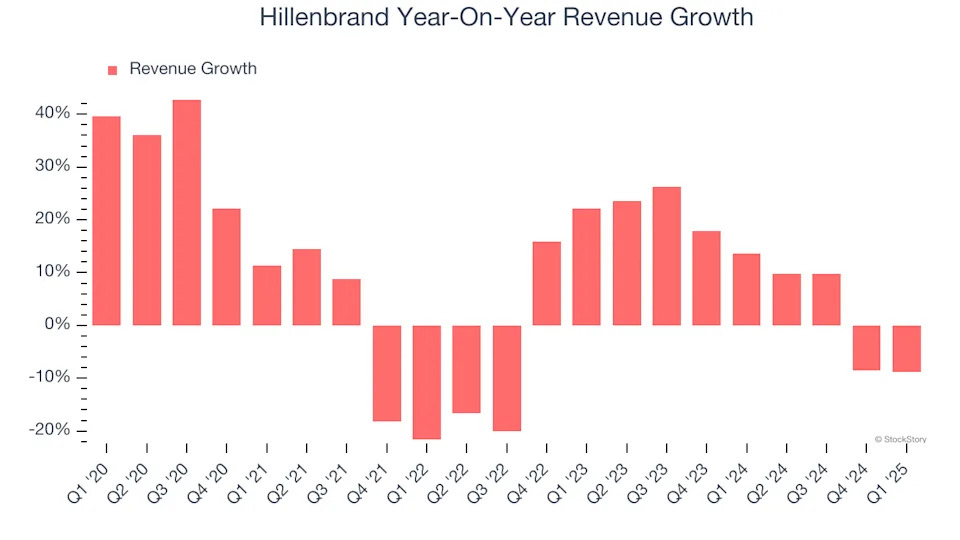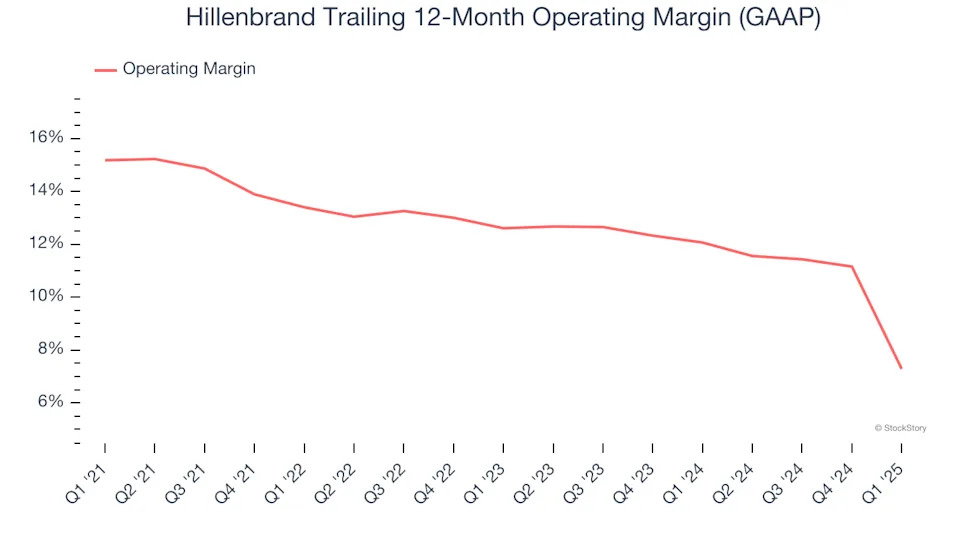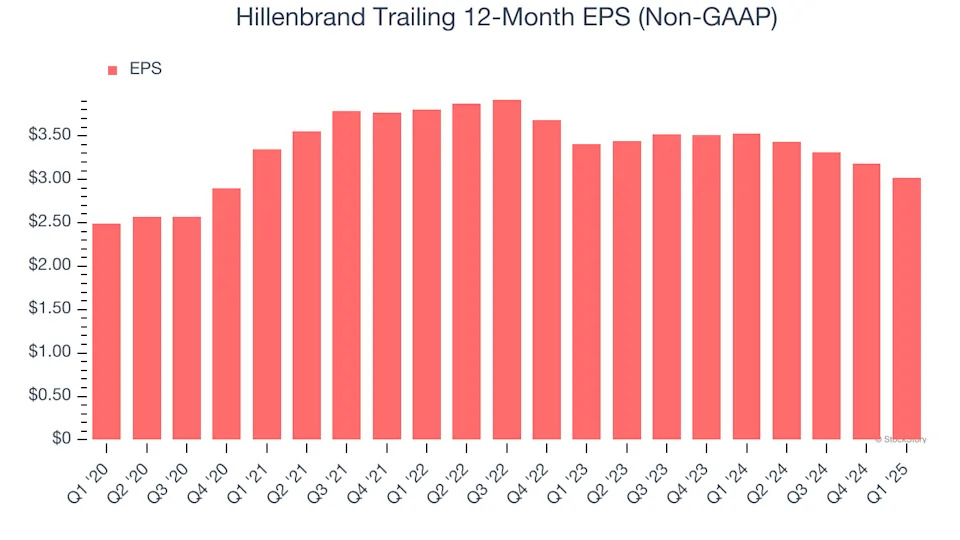News
Hillenbrand (NYSE:HI) Surprises With Q1 Sales But Stock Drops
Industrial processing equipment and solutions provider Hillenbrand (NYSE:HI) reported Q1 CY2025 results beating Wall Street’s revenue expectations , but sales fell by 8.8% year on year to $715.9 million. On the other hand, next quarter’s revenue guidance of $576 million was less impressive, coming in 5.8% below analysts’ estimates. Its non-GAAP profit of $0.60 per share was 11.5% above analysts’ consensus estimates.
Is now the time to buy Hillenbrand? Find out in our full research report .
Hillenbrand (HI) Q1 CY2025 Highlights:
"Through the quarter, global macroeconomic conditions worsened as uncertainty around tariffs escalated significantly. In light of this, I was pleased with our business performance, which is a testament to the disciplined execution of our teams. We experienced solid year-over-year order growth in our food, health, and nutrition portfolio, as well as our separation products, along with relatively stable performance in APS aftermarket and across MTS. However, looking ahead, we expect customers to remain cautious in their capital investment decisions over the near-term given the increase in tariffs and heightened macro uncertainty, prompting us to adjust our outlook for the remainder of the fiscal year. Our teams across the enterprise are executing strategies to strengthen our supply chain and help mitigate increased costs, including surcharge pricing, alternative sourcing, and shifting production within our current footprint," said Kim Ryan, President and Chief Executive Officer of Hillenbrand.
Company Overview
Hillenbrand, Inc. (NYSE: HI) is an industrial company that designs, manufactures, and sells highly engineered processing equipment and solutions for various industries.
Sales Growth
A company’s long-term sales performance can indicate its overall quality. Any business can put up a good quarter or two, but the best consistently grow over the long haul. Over the last five years, Hillenbrand grew its sales at a mediocre 7.2% compounded annual growth rate. This fell short of our benchmark for the industrials sector and is a rough starting point for our analysis.

We at StockStory place the most emphasis on long-term growth, but within industrials, a half-decade historical view may miss cycles, industry trends, or a company capitalizing on catalysts such as a new contract win or a successful product line. Hillenbrand’s annualized revenue growth of 9.7% over the last two years is above its five-year trend, suggesting its demand recently accelerated.

This quarter, Hillenbrand’s revenue fell by 8.8% year on year to $715.9 million but beat Wall Street’s estimates by 3.6%. Company management is currently guiding for a 26.8% year-on-year decline in sales next quarter.
Looking further ahead, sell-side analysts expect revenue to decline by 18.8% over the next 12 months, a deceleration versus the last two years. This projection is underwhelming and implies its products and services will see some demand headwinds.
Unless you’ve been living under a rock, it should be obvious by now that generative AI is going to have a huge impact on how large corporations do business. While Nvidia and AMD are trading close to all-time highs, we prefer a lesser-known (but still profitable) stock benefiting from the rise of AI. .
Operating Margin
Hillenbrand has been an efficient company over the last five years. It was one of the more profitable businesses in the industrials sector, boasting an average operating margin of 12%. This result isn’t too surprising as its gross margin gives it a favorable starting point.
Analyzing the trend in its profitability, Hillenbrand’s operating margin decreased by 7.9 percentage points over the last five years. This raises questions about the company’s expense base because its revenue growth should have given it leverage on its fixed costs, resulting in better economies of scale and profitability.

In Q1, Hillenbrand generated an operating profit margin of negative 6.2%, down 16.6 percentage points year on year. Since Hillenbrand’s operating margin decreased more than its gross margin, we can assume it was less efficient because expenses such as marketing, R&D, and administrative overhead increased.
Earnings Per Share
We track the long-term change in earnings per share (EPS) for the same reason as long-term revenue growth. Compared to revenue, however, EPS highlights whether a company’s growth is profitable.
Hillenbrand’s EPS grew at a weak 3.9% compounded annual growth rate over the last five years, lower than its 7.2% annualized revenue growth. This tells us the company became less profitable on a per-share basis as it expanded due to non-fundamental factors such as interest expenses and taxes.

We can take a deeper look into Hillenbrand’s earnings to better understand the drivers of its performance. As we mentioned earlier, Hillenbrand’s operating margin declined by 7.9 percentage points over the last five years. This was the most relevant factor (aside from the revenue impact) behind its lower earnings; taxes and interest expenses can also affect EPS but don’t tell us as much about a company’s fundamentals.
Like with revenue, we analyze EPS over a more recent period because it can provide insight into an emerging theme or development for the business.
For Hillenbrand, its two-year annual EPS declines of 5.9% show it’s continued to underperform. These results were bad no matter how you slice the data.
In Q1, Hillenbrand reported EPS at $0.60, down from $0.76 in the same quarter last year. Despite falling year on year, this print easily cleared analysts’ estimates. Over the next 12 months, Wall Street expects Hillenbrand’s full-year EPS of $3.02 to shrink by 15%.
Key Takeaways from Hillenbrand’s Q1 Results
We were impressed by how significantly Hillenbrand blew past analysts’ revenue expectations this quarter. We were also happy its EPS outperformed Wall Street’s estimates. On the other hand, its full-year revenue and EPS guidance were both lowered and missed Wall Street’s estimates. This outlook is weighing heavily on shares. The stock traded down 6.1% to $21.23 immediately following the results.
The latest quarter from Hillenbrand’s wasn’t that good. One earnings report doesn’t define a company’s quality, though, so let’s explore whether the stock is a buy at the current price. We think that the latest quarter is just one piece of the longer-term business quality puzzle. Quality, when combined with valuation, can help determine if the stock is a buy. We cover that in our actionable full research report which you can read here, it’s free .

